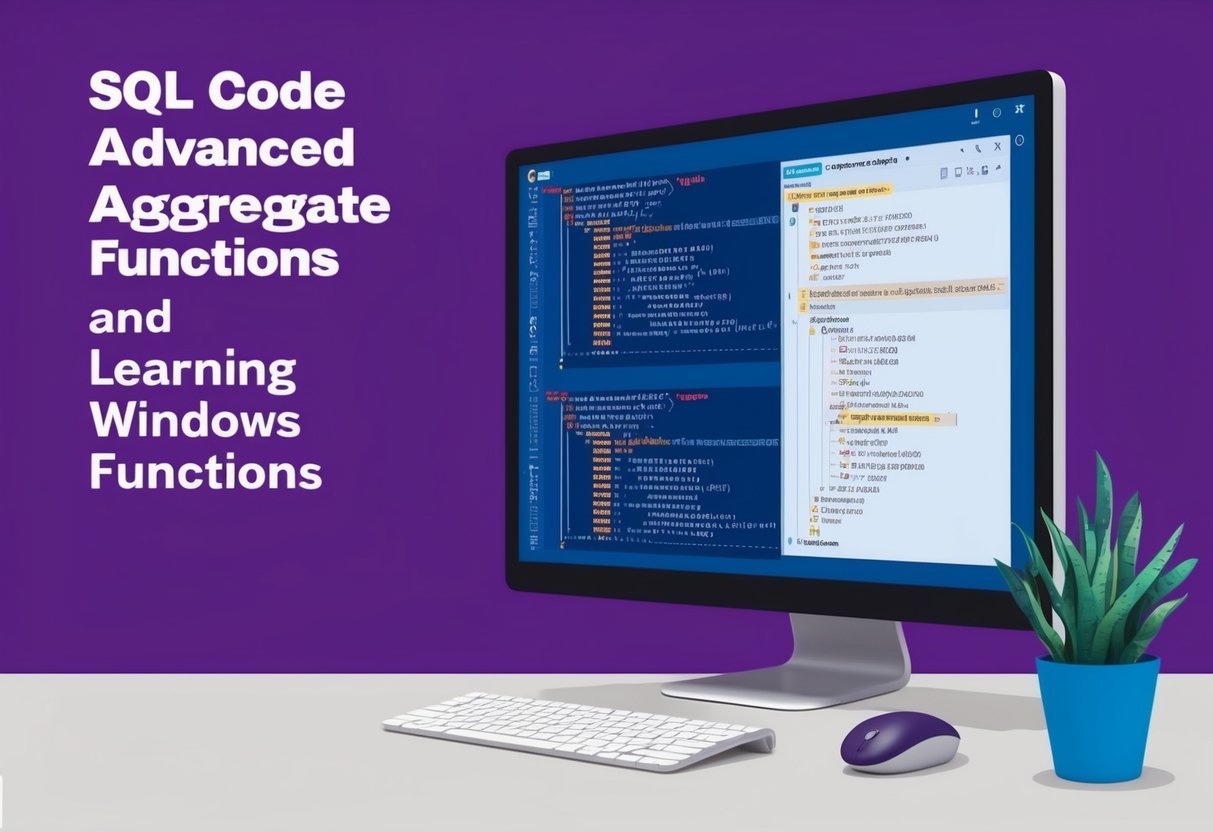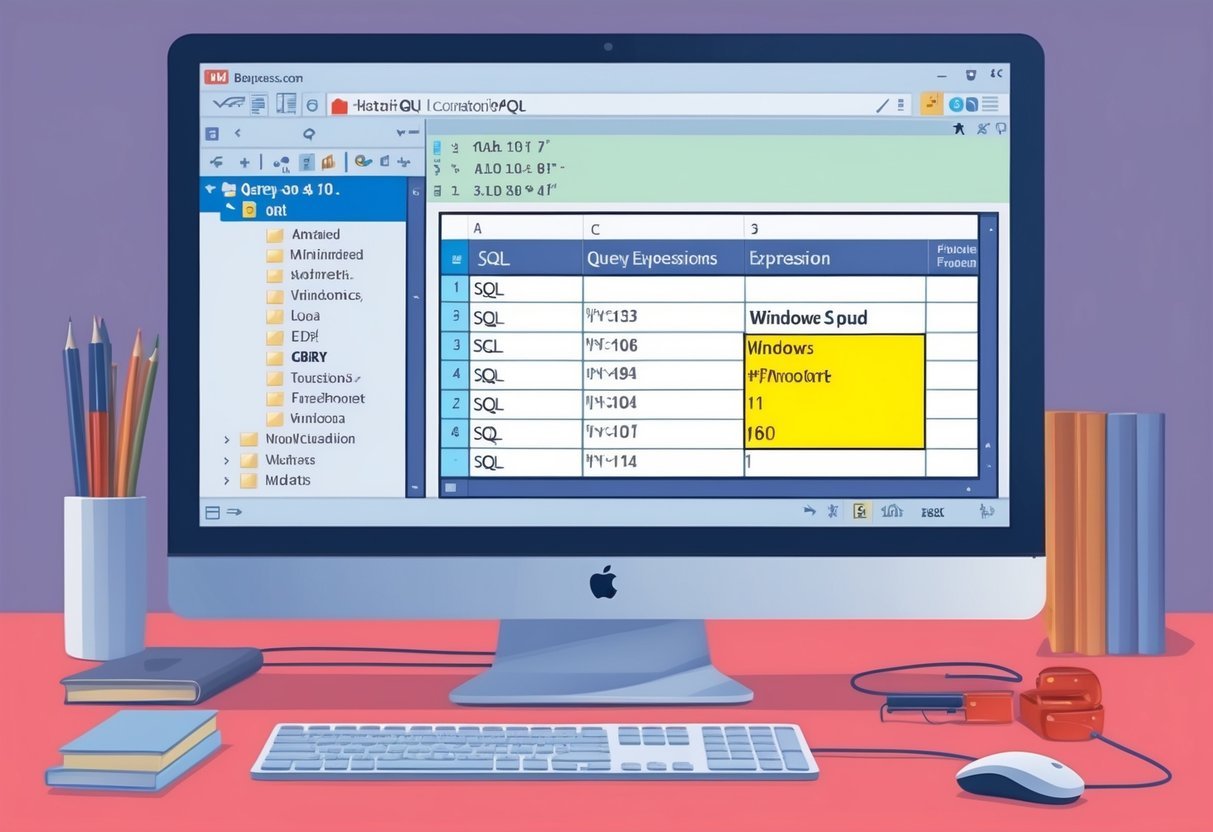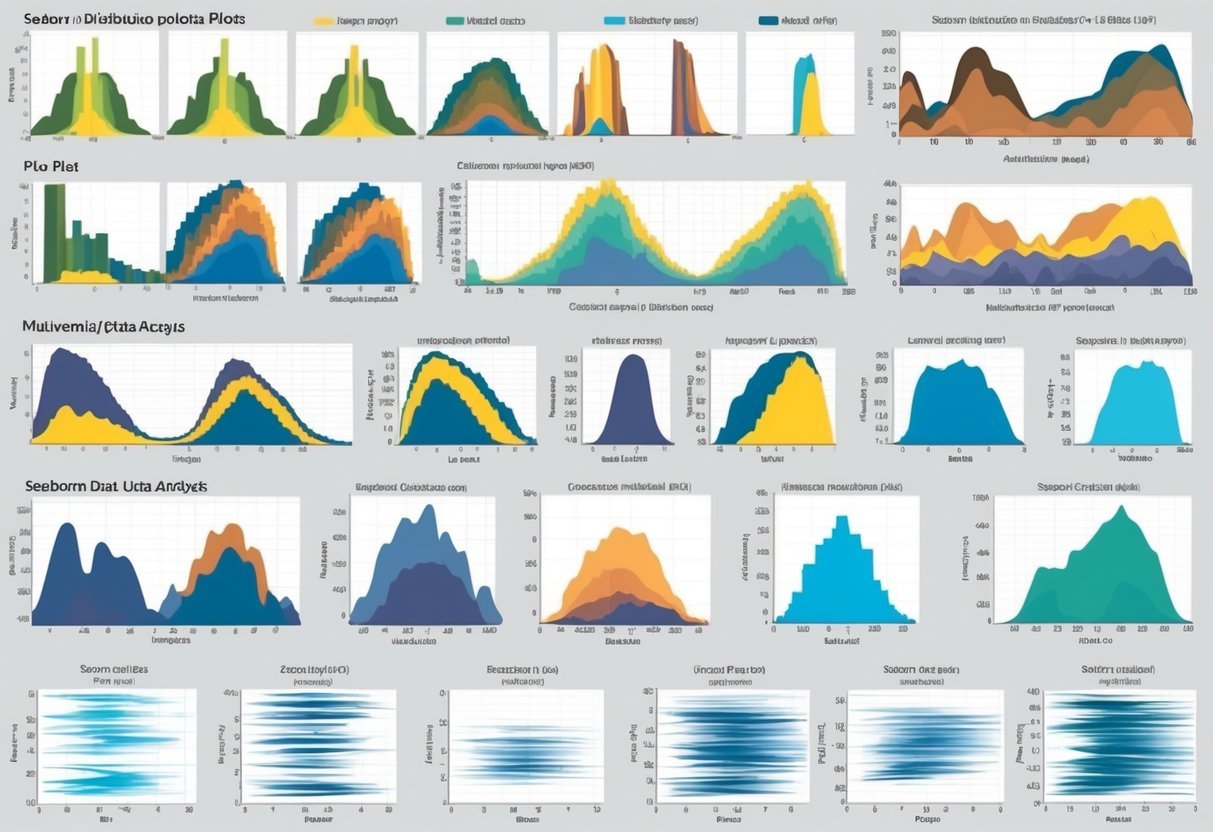Understanding XML Data in SQL Server
In SQL Server, XML data can be managed effectively with specific data types and schema collections.
Knowing the basics of XML data types and how to use XML Schema Definitions (XSD) can enhance data handling in SQL environments.
Basics of XML Data Type
The XML data type in SQL Server allows users to store and query XML formatted data. This data type offers great flexibility for handling semi-structured data within a relational database system.
Users interact with XML data using server functions like XMLNODE, XMLQUERY, and XMLVALUE. These functions help parse and manipulate the data easily.
The XML data type supports methods to extract data, transform it, and even validate the structure to ensure it matches expected patterns.
Utilizing the XML data type improves data interchange between SQL Server and various applications. It is crucial for scenarios where the data generated or consumed needs to be in a hierarchical format rather than a flat, tabular structure.
This is particularly beneficial for data exchange in web services and applications requiring complex data structures. In short, it allows seamless integration of XML formats with relational data.
XML Schema Collection and XSD
XML Schema Collection in SQL Server serves as a container for one or more XML Schema Definitions (XSDs). This collection helps validate XML data stored within an XML column, ensuring that XML documents meet specific structural and data requirements. This process improves data integrity and reliability.
When XML data is inserted, the server uses the XSD to check for compliance with defined rules. This validation process makes sure that the XML data adheres to predetermined formats and constraints, akin to data validation in traditional databases.
The schema collection reduces overhead in repeated validation, helping maintain performance efficiency. It is instrumental in environments where structured data modeling is critical.
By using XML Schema Collections, users can manage complex data more effectively and enforce strict data integrity rules. This capability ensures that XML data remains consistent, accurate, and reliable over time.
Working with the T-SQL Query Language
T-SQL is a powerful tool for working with XML data. It provides functions and methods like query(), value(), exist(), modify(), and nodes() to query and manipulate XML within SQL Server. These capabilities make it easier to manage complex data formats.
Introduction to T-SQL for XML
T-SQL offers robust support for handling XML data. One vital feature is the ability to query XML data using T-SQL’s specialized methods.
The query() method retrieves fragments of XML, allowing detailed data extraction. The exist() method checks for the presence of specific nodes or values, enhancing conditional logic within queries.
Through the modify() method, users can alter XML content directly within the database, improving workflow efficiency.
These methods work together to provide comprehensive XML manipulation directly within SQL Server, facilitating smooth data management for developers.
T-SQL’s integration of these XML features allows precise operations, ensuring that developers can extract, verify, and update XML data efficiently.
Utilizing the Value() Method
The value() method in T-SQL is used to extract values from XML data as SQL types, enhancing the ability to work with different data formats. This method converts XML nodes or attributes into scalar values, which can then be easily handled within SQL queries.
For example, when combined with the nodes() method, value() enables the extraction and use of specific XML values for calculations or data transformations.
By leveraging the value() method, developers ensure that their applications can efficiently translate XML data into usable formats, streamlining both data retrieval and processing within SQL environments.
Executing Basic XML Queries
When working with XML data in T-SQL, it’s essential to understand how to query XML and use the FOR XML clause effectively. These tools allow for the retrieval and management of XML data stored in SQL Server.
Using the Select Statement
The SELECT statement is crucial for querying XML data in SQL Server. It allows the user to extract specific data from XML nodes.
To retrieve information, one can use the value() method, which extracts the value of a single node in the XML data. The nodes() method is used to define how the XML data is shredded into rows.
Inline functions like OPENXML, XQuery, and XMLTABLE simplify data retrieval.
For example, SELECT with XQuery expressions can query XML documents directly, making it easier to handle complex hierarchical data structures.
With these tools, users can perform precise and efficient queries on XML data stored within SQL databases.
Employing the For XML Clause
The FOR XML clause is a powerful feature in T-SQL, used to convert SQL query results into XML format. This is particularly useful when transferring data between systems that support XML well.
There are different modes available such as RAW, AUTO, EXPLICIT, and PATH, each offering unique ways to structure the XML output.
The RAW mode produces a simple, element-centered XML tree, while AUTO creates nested XML by automatically identifying the hierarchy from the table relationships.
In more complex scenarios, PATH provides greater customization by allowing users to define the XML structure explicitly.
Through these modes, SQL Server users gain robust flexibility in creating XML documents from query results.
Advanced Query Techniques
When working with T-SQL to handle XML data, advanced techniques like XQuery and the Cross Apply function provide powerful tools. These methods enhance querying efficiency and allow for detailed manipulation and analysis of XML data within SQL Server.
Leveraging XQuery in SQL Server
XQuery is a robust language for querying XML data. It is integrated within SQL Server, enabling precise queries on XML instances. This allows users to extract, transform, and interact with XML directly within the database.
Using the query() method, developers can retrieve specific portions of XML data. This is essential for applications needing dynamic XML content manipulation.
For instance, selecting specific XML nodes or attributes can be achieved with a query like '//book/title', which targets the title elements within book nodes.
Utilizing XQuery expressions can significantly enhance database operations and efficiency, enabling complex querying and data retrieval directly from XML documents stored in SQL Server.
Its capability to handle hierarchical data structures makes it indispensable for applications with diverse and complex data needs.
Cross Apply for XML Nodes
The CROSS APPLY operator is crucial in SQL Server for accessing XML data more effectively. It works in conjunction with the nodes() method to transform XML data into a relational format, allowing for more straightforward querying and data manipulation.
When combined, CROSS APPLY and nodes() enable precise targeting of XML nodes. For example, retrieving node lists or performing operations on each node becomes seamless.
This is particularly useful when dealing with nested XML structures, as it allows for iteration over child nodes, extracting relevant data efficiently.
This approach streamlines accessing, transforming, and leveraging XML data, making it a valuable addition to any database handling complex XML data processing.
Integrating XML with Relational Data

Integrating XML data with a relational database involves processes that allow seamless query and management of data. The main steps include transforming XML data into a relational format and effectively retrieving data using OpenXML functions.
Transforming XML to Relational Format
Transforming XML data into a relational format is a critical step for databases. XML files often have a complex hierarchy, making it necessary to map this structure into tables with rows and columns.
This is achieved by defining a schema that relates XML elements to database columns.
Tools like SQL Server let users import XML data, providing formats and tools for conversion. Using special data types designed for XML, users can store and query XML efficiently in relational databases.
Doing this ensures that the integrity of the XML data remains intact and query performance is optimized.
Many database systems offer built-in functions or methods to perform this transformation, making the process more straightforward for developers.
Retrieving Data with OpenXML
OpenXML is a crucial function used in SQL Server for reading XML data. It allows users to work with XML data as if it were a database table.
By parsing the XML document, OpenXML can select and retrieve data efficiently from within the file.
First, an XML document is prepared, and OpenXML is initialized. When the function is executed, it converts XML into a rowset that mirrors table rows.
This makes it simple to query and join XML data with traditional tables.
Using OpenXML in SQL Server provides flexibility in handling XML data, allowing complex data operations without needing to transform XML into another format first.
This function is particularly powerful for developers dealing with dynamic or nested XML structures.
Managing XML Variables and Data Models
Managing XML variables and data models in T-SQL involves handling XML type variables and leveraging XML for effective data organization. It details the creation of XML data instances and the design of models that can store and retrieve structured data efficiently.
Defining XML Type Variables
XML type variables allow T-SQL users to store and manipulate XML data within SQL Server. When defining an XML type variable, it is important to declare it correctly to ensure that it can handle the expected XML document structure.
These variables are defined using the xml data type in SQL Server.
For example, to declare an XML variable named @xmlData, one can use the following syntax:
DECLARE @xmlData xml
This variable can then be assigned XML values and queried for data extraction.
It allows users to create instances of XML data, manipulate them, and query specific nodes or attributes. Proper use of XML variables enables efficient storage and retrieval of structured data within SQL databases.
They offer flexibility in handling both small snippets and large XML documents.
Designing Data Models Using XML
XML data models offer a structured approach to managing complex data. By using XML, it is possible to create rich, hierarchical data relationships that are easy to navigate and query.
This design is beneficial when dealing with data that naturally fits into a tree structure, such as catalogs or configuration settings.
The process involves defining the structure of the XML document, which serves as the model. This model specifies how data is organized in terms of elements, attributes, and nesting, providing a clear blueprint for data storage and retrieval.
Additionally, with the use of T-SQL capabilities, developers can query and manipulate XML nodes, supporting a wide range of applications.
Models can be used to validate the structure of XML data before insertion into the database, ensuring data integrity and consistency.
This approach allows for dynamic and adaptable data models, greatly enhancing the flexibility and scalability of the database systems.
Utilizing XML Namespaces
Using XML namespaces in T-SQL allows developers to effectively organize and manage XML data. Learning how to use these namespaces is crucial for handling XML documents correctly, especially when dealing with attributes and elements that might have the same names but different meanings.
Understanding Namespaces and Prefixes
XML namespaces are identifiers that differentiate elements or attributes with the same name but different contexts. They prevent confusion and collisions by providing a unique namespace URI.
Prefixes act as shorthand for these URIs. For example, xmlns:ex="http://example.com/schema" declares a namespace prefix ex. This allows developers to reference XML elements like <ex:item> clearly linked to the declared namespace.
Singletons, in this context, refer to unique attributes or elements defined within that namespace. A carefully chosen prefix helps maintain readability and access specific XML content without ambiguity.
Querying with XMLNamespaces
The WITH XMLNAMESPACES clause in T-SQL is used to declare the XML namespaces that are needed for a query. By defining prefixes, developers can extract and manage data accurately from XML documents.
Consider a query designed to select XML data with specific namespaces. It uses the WITH XMLNAMESPACES clause to assign prefixes, ensuring elements like <ex:item> are correctly parsed.
When querying, these prefixes help avoid errors and ensure the correct elements are retrieved. The query syntax typically involves brackets to specify the desired elements, using the prefixes defined in the XML namespaces clause to streamline the access process to the structured XML content.
Working with Typed vs. Untyped XML
Typed and untyped XML have different uses and benefits when working with database systems. Typed XML is associated with an XML Schema (XSD), providing more structure and validation. Meanwhile, untyped XML is more flexible and can hold any XML content without strict data type definitions.
Differences Between Typed and Untyped XML
Typed XML is linked to an XML Schema (XSD), which defines the structure, elements, and data types. This enables strong validation and data integrity by ensuring that XML documents adhere to a predefined format. Using typed XML means the database can enforce these rules whenever data is inserted or modified.
In contrast, untyped XML is not tied to any schema, allowing for greater flexibility but sacrificing the strict validation that typed XML provides. As a result, untyped XML can store a wide range of XML documents without checking for specific data types or structures. This can be useful in scenarios where data structures might change frequently or are not predefined.
Implementing Typed XML
To implement typed XML, define an XSD that describes your data model. This schema includes details about the XML format and the types of data each element or attribute can contain.
Once the schema is defined, it is linked to the XML data type column in SQL Server. This setup allows T-SQL to use various XML data type methods for querying and modifying XML content.
These methods include query(), value(), exist(), and nodes(), enabling efficient data manipulation. By enforcing typed XML, it ensures compliance with the schema on both function calls and data operations. Typed XML is ideal for scenarios requiring strict data consistency and validation.
Manipulating XML Data with T-SQL
Manipulating XML data with T-SQL involves using methods like modify() and nodes() to efficiently handle XML instances. These methods allow developers to update, insert, or delete XML nodes, as well as navigate through complex XML structures, enabling streamlined data management tasks.
Using Modify() Method in XML
The modify() method is a crucial tool for altering XML data directly within SQL Server. It allows a user to update, insert, or delete XML content in an XML column. This method uses XML DML (Data Manipulation Language) expressions to perform its functions.
For updates, the modify() method can replace existing values within an XML instance. For example, changing a specific node value requires an update expression. Insertion is handled by specifying a node and the position where new data should be inserted. Deletions involve selecting the appropriate node to remove, which helps maintain the structure without affecting other data. Mastering the modify() method can significantly enhance efficiency when working with XML data.
Handling XML Nodes with Nodes() Method
The nodes() method is essential for breaking down XML data into a form that can be queried more easily in T-SQL. It allows the conversion of complex XML structures into row sets, which can then be queried using regular SQL statements.
By using the nodes() method, developers can extract specific parts of the XML for detailed querying. This method assigns the XML nodes to a table structure, making it possible to navigate through each node systematically. Converting XML to row data enhances readability and analysis, particularly when dealing with large XML documents. The ability to handle individual nodes efficiently through the nodes() method simplifies XML data management and query processes.
Incorporating XML Data into Azure SQL
Integrating XML data into Azure SQL involves understanding both Azure SQL Database and Azure SQL Managed Instance. With XML, you can handle hierarchical data effectively and Azure SQL offers robust support for this.
Azure SQL Database and XML
Azure SQL Database allows users to store, query, and manage XML data seamlessly. XML data types can be used for storing XML documents, enabling complex data structures to be embedded within database tables. Users can employ XQuery for querying XML data, providing flexible ways to retrieve and manipulate hierarchical information.
Moreover, T-SQL functions like query(), value(), and exist() help in extracting data from XML documents. Developers may also use xml.modify() for updating XML instances stored in the database. Designing the schema ensures efficient data processing when dealing with XML files.
Azure SQL Managed Instance Considerations
Azure SQL Managed Instance shares many features with Azure SQL Database, but there are some additional considerations. This service supports cross-database queries, which is advantageous when dealing with XML data across multiple databases. Additionally, it provides integrated security features that safeguard XML data transactions.
Managed Instance also supports SQL Server Agent for scheduling jobs, making batch processing of XML data more efficient. It’s important to handle XML namespaces correctly when storing and retrieving XML data to avoid conflicts and ensure data integrity. Proper setup facilitates smooth integration of XML files and data streams.
XML Data Import and Export
When working with XML data in SQL Server, it is crucial to know how to effectively import and export data. This involves techniques for pulling XML data into the database and exporting it in useful formats.
Importing Data Using OpenRowset and Bulk
OpenRowset is a versatile function in SQL Server that enables data import from various sources. For XML data, it’s used to read data from a file and insert it into a table. The syntax often includes specifying BULK along with the file path to load the XML content.
For instance, using OpenRowset with a bulk option allows loading XML data efficiently in one batch. This method does not require creating a linked server and is useful for ad-hoc access.
sp_xml_preparedocument can also be utilized for parsing XML data. This stored procedure takes an XML document into a local variable, making it easier to work with in queries. After importing, data can be queried and inserted into tables for further analysis and management.
Exporting Data with For XML
The For XML clause in SQL Server is a powerful tool for exporting data as XML. When appended to a SELECT statement, it formats the result set as XML. This is useful for creating XML documents from database tables.
Using the PATH mode in For XML gives fine control over XML formatting, allowing custom structuring of the output. This clause is essential for applications needing XML-formatted output, making data easily shareable across different systems.
To efficiently export large data sets, batch processing can be applied. Exporting in smaller chunks prevents exceeding limits and ensures smoother performance.
Maintaining XML Data Integrity

Ensuring the accuracy and consistency of XML data is vital in databases. This involves working with various tools and techniques to guarantee that XML data is well-formed and valid according to defined schemas.
Working with XML Schema Collections
An XML Schema Collection is a database object that holds XML schemas. These schemas define the structure and rules for XML documents stored in a database.
By using a schema collection, you can enforce constraints on XML data, ensuring it meets specific requirements for structure and data types. This process helps in maintaining the integrity of the data.
Adding schemas to a collection involves using Transact-SQL commands. Once defined, the schemas in the collection help validate incoming XML data, ensuring it adheres to the predefined structure before it’s stored. This approach minimizes errors and enhances consistency across XML documents.
Learn more about defining data integrity using schemas in Transact-SQL.
Cleaning Up with SP_XML_RemoveDocument
The sp_xml_removedocument procedure in SQL Server is used to free memory resources by cleaning up the XML documents stored in memory.
When XML data is opened using sp_xml_preparedocument, memory is allocated for handling the XML content. To avoid memory leaks and optimize performance, it is crucial to use sp_xml_removedocument once you finish with the XML processing.
This procedure accepts a handle to the document and releases the resources associated with that handle. Effective use of sp_xml_removedocument is important for maintaining system performance and preventing resource wastage. Proper management of these documents ensures that the server can efficiently handle concurrent XML processing tasks without degradation.
Explore the management of XML features and T-SQL queries on SQL Server.
Frequently Asked Questions
Working with XML data in SQL Server involves parsing, generating output, and converting data effectively. Knowing these processes helps manage and query XML data efficiently.
What are the steps to parse XML data within SQL Server?
To parse XML data, one can use the nodes method to break down XML into a rowset. The value method extracts data from XML nodes. Using these methods together allows effective navigation through XML structures in SQL Server.
How can you generate XML output from a SQL query?
Generating XML output involves using the FOR XML clause in SQL Server queries. This clause can be added to a SELECT statement to format the result set as XML. Options like RAW, AUTO, and PATH determine the structure of the output.
What is the process for converting XML data into a SQL query?
Converting XML data into a SQL query can be achieved with the OPENXML function. This function, along with the sp_xml_preparedocument stored procedure, allows SQL Server to read and execute queries on XML data as if it were a table.
In what ways can SQL Server read XML files?
SQL Server can read XML files by using OPENROWSET or BULK INSERT to import data from an XML file into a database table. Another way is through the XML data type, which can store and query XML data directly.
Can you provide examples of querying XML data with SQL Server?
Examples of querying XML data include using the XQuery language to extract XML node values. The query and exist methods allow retrieval and checking for specific nodes or values, helping users access and manipulate XML content.
What methods are available for the fast parsing of XML in SQL Server?
Fast parsing of XML can be optimized with techniques like using indexes on the XML column. The nodes method can also be used to split large XML documents. Additionally, limiting the XML content processed in queries can enhance performance.












































